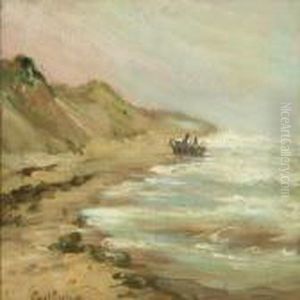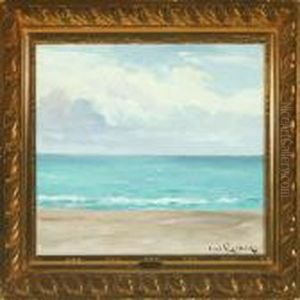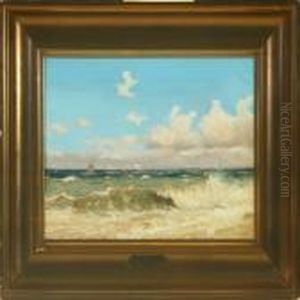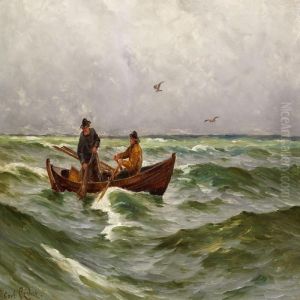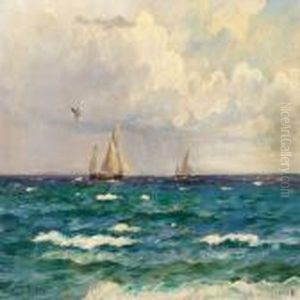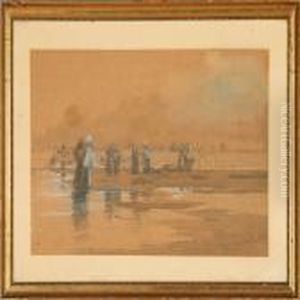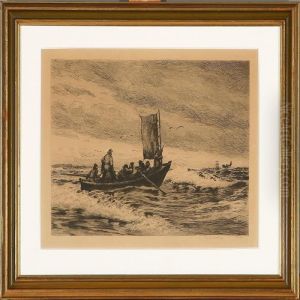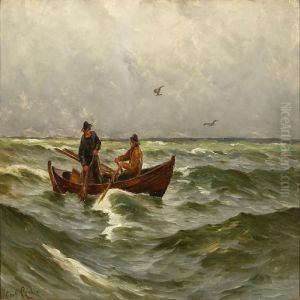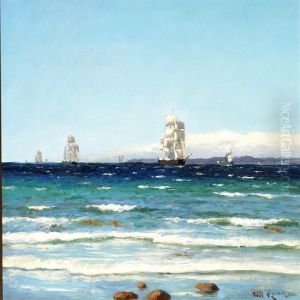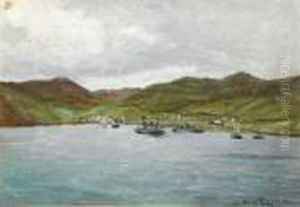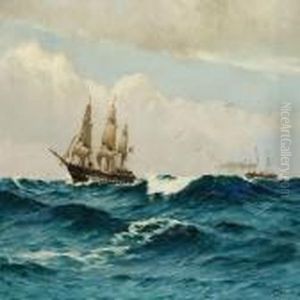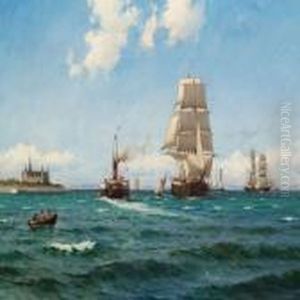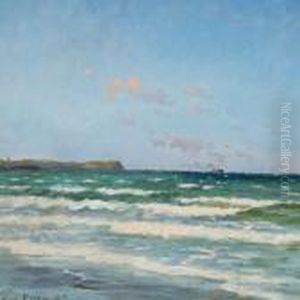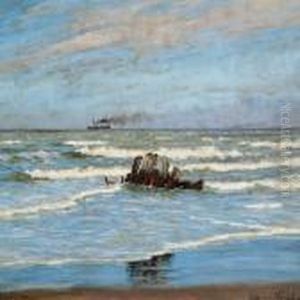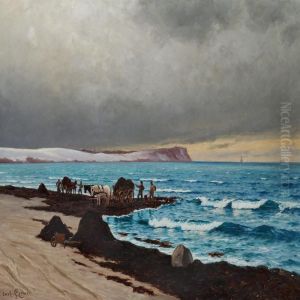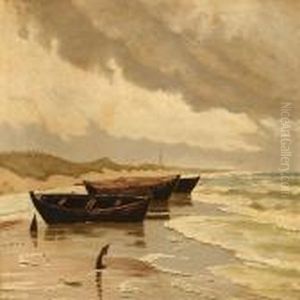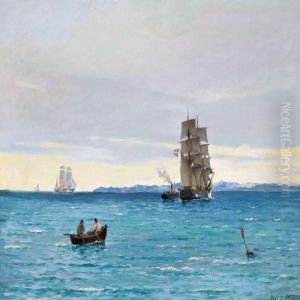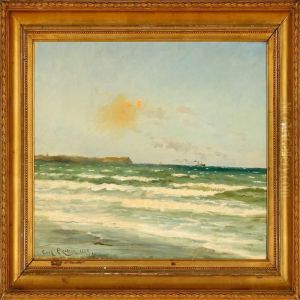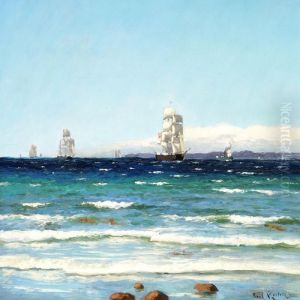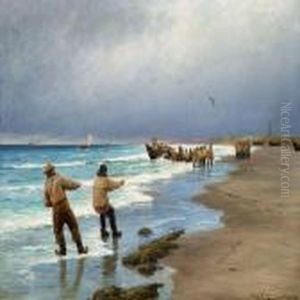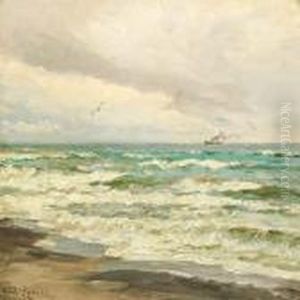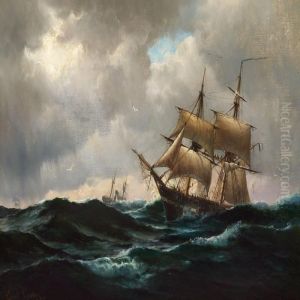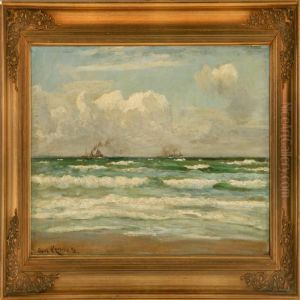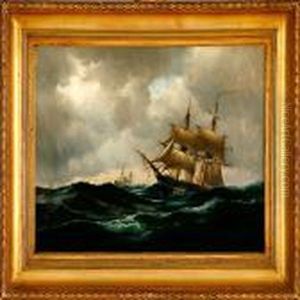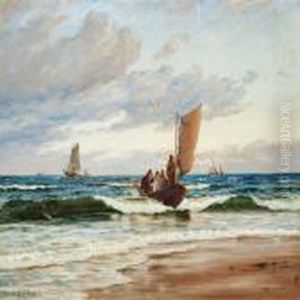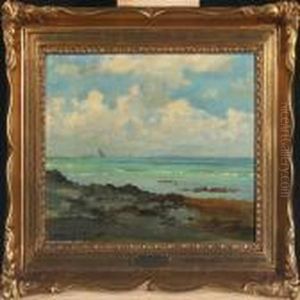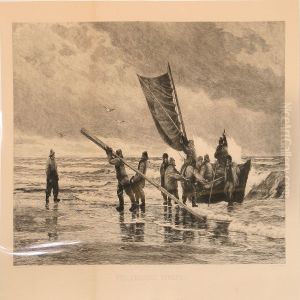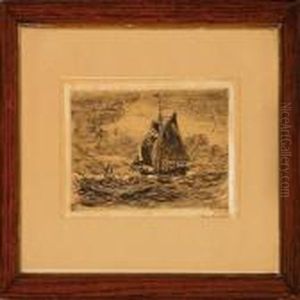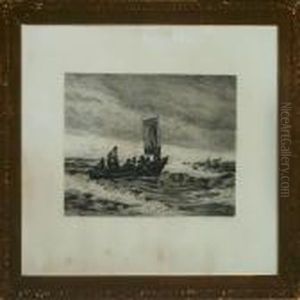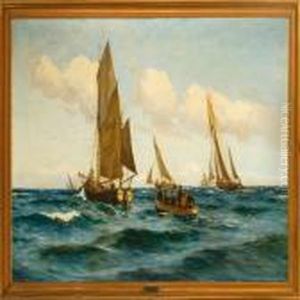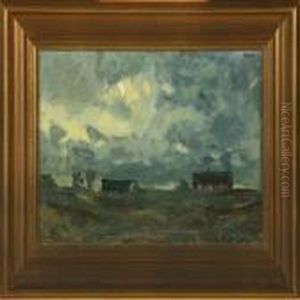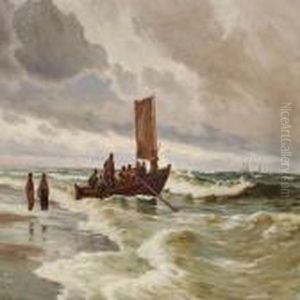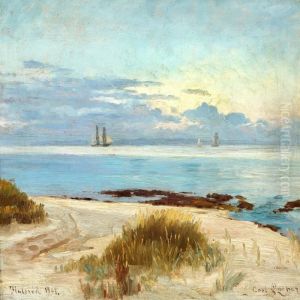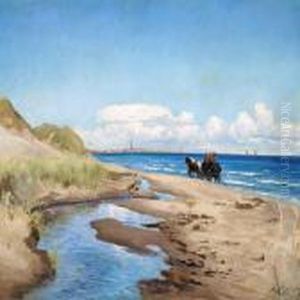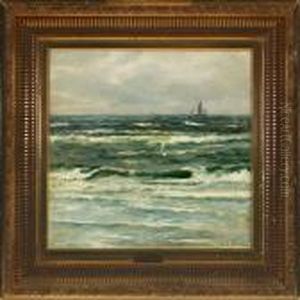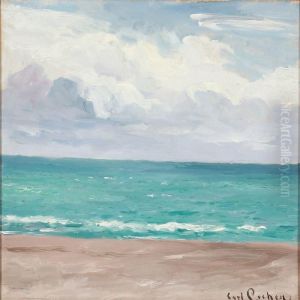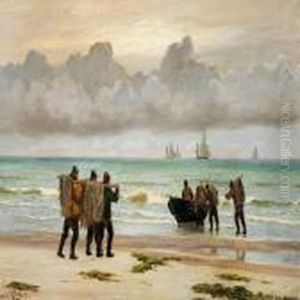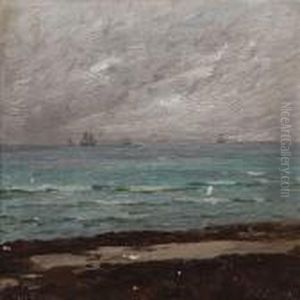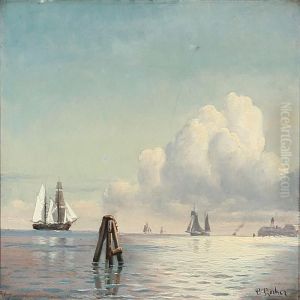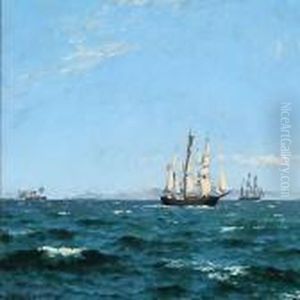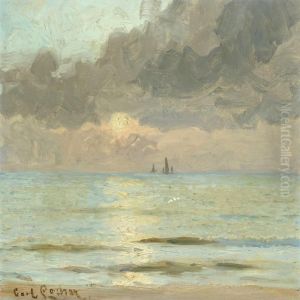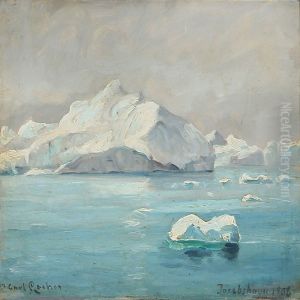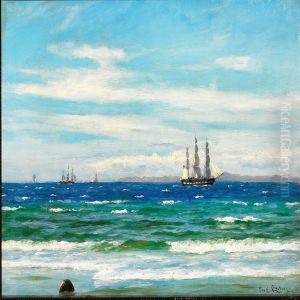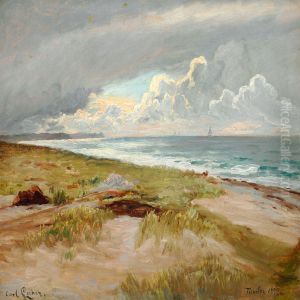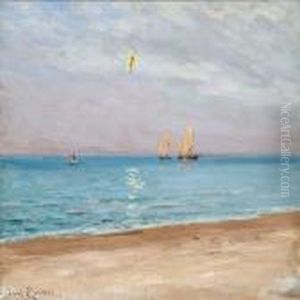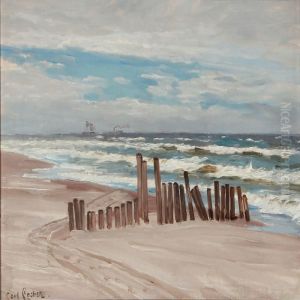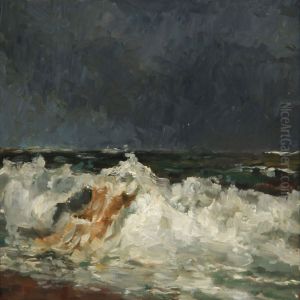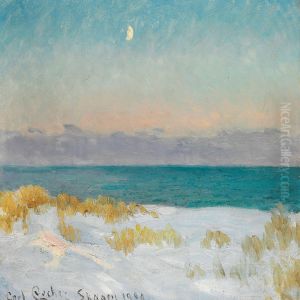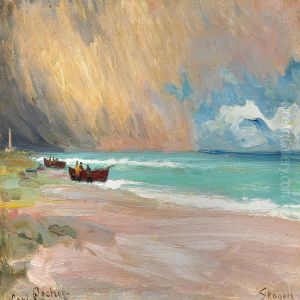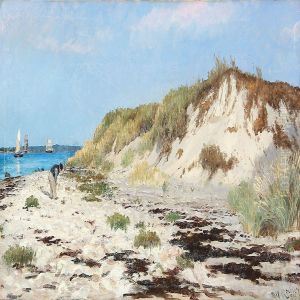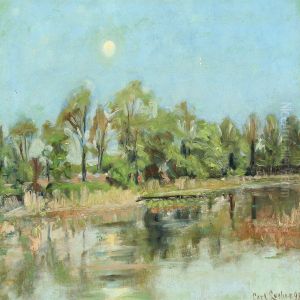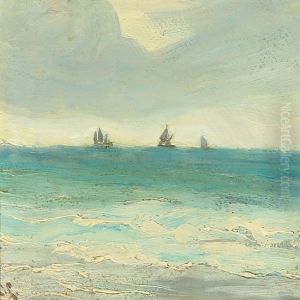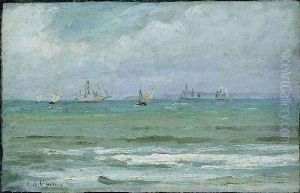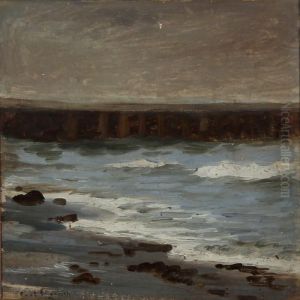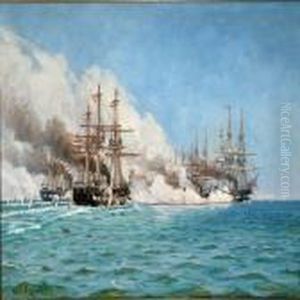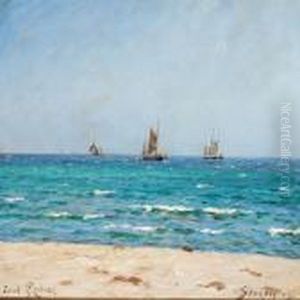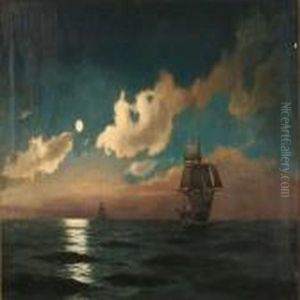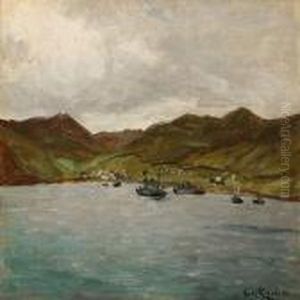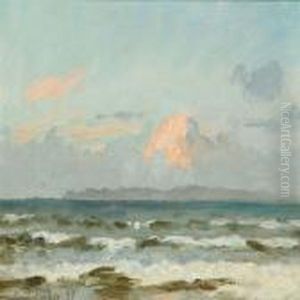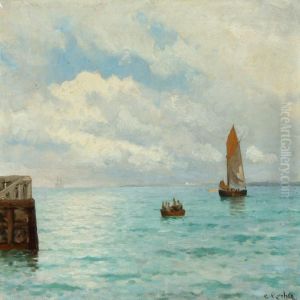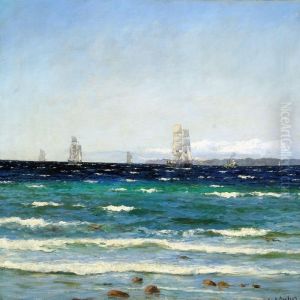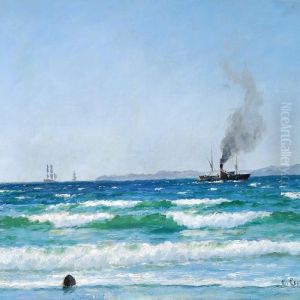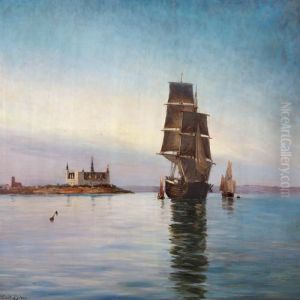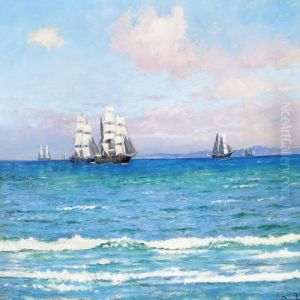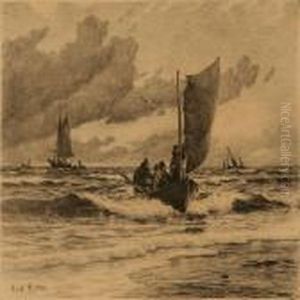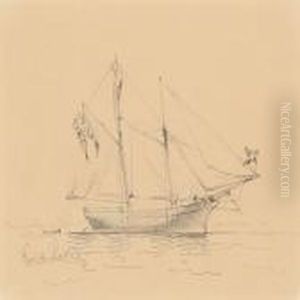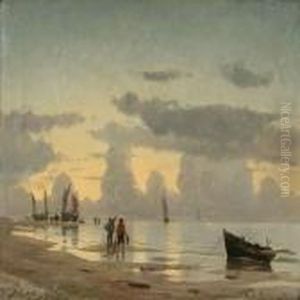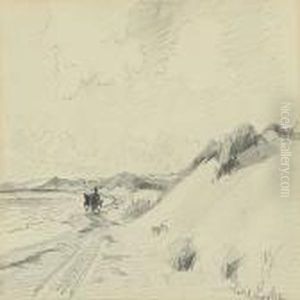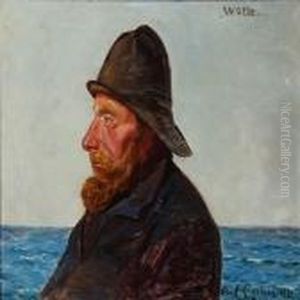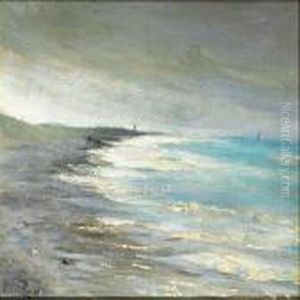Carl Locher Paintings
Carl Locher was a Danish realist painter who is best known for his marine paintings and scenes of the rugged landscape of Skagen, a Northern Danish coastal town that became a famous artists' colony in the late 19th century. Born on November 21, 1851, in Flensburg, Duchy of Schleswig, he demonstrated an early talent for art and pursued his passion despite his father's initial opposition.
Locher was initially trained at the Royal Danish Academy of Fine Arts in Copenhagen, where he was influenced by the teachings of the celebrated Danish painter P.S. Krøyer, who was also associated with the Skagen Painters. Locher's early work was characterized by a precise and detailed approach, which he gradually developed into a more free and vivid style, representative of the Skagen Painters' focus on naturalism and plein-air painting.
In the early 1880s, Locher visited Skagen for the first time and was captivated by the unique quality of light and the simple lives of the local fishermen. He became a central figure in the Skagen colony, alongside other notable artists such as Anna and Michael Ancher, and Krøyer. Locher's paintings from this period often depict the harsh and dangerous life at sea, showing a deep respect for the fishermen and their struggle against the elements.
Locher's commitment to realism is seen in his meticulous attention to detail, particularly in his renderings of the sea and ships. Some of his most acclaimed works are his marine paintings, which are noted for their technical accuracy and atmospheric depth. He was particularly skilled in capturing the reflections and movements of water, which added a dynamic quality to his seascapes.
Throughout his career, Locher received several honors and his work was exhibited widely. He was awarded the Eckersberg Medal in 1890, one of the highest recognitions for a Danish artist. Despite his success, Locher remained closely tied to Skagen, where he continued to live and work until his death on December 20, 1915.
Carl Locher's legacy is preserved in the Skagens Museum, dedicated to the art of the Skagen Painters, where many of his works are held. His portrayal of the sea and coastal life has left an indelible mark on Danish art, making him one of the key figures in the Skagen artistic movement.
